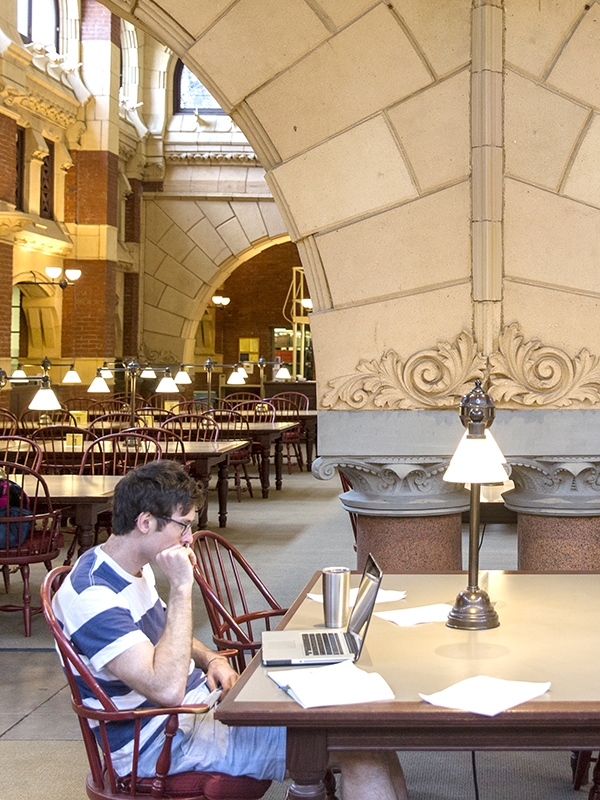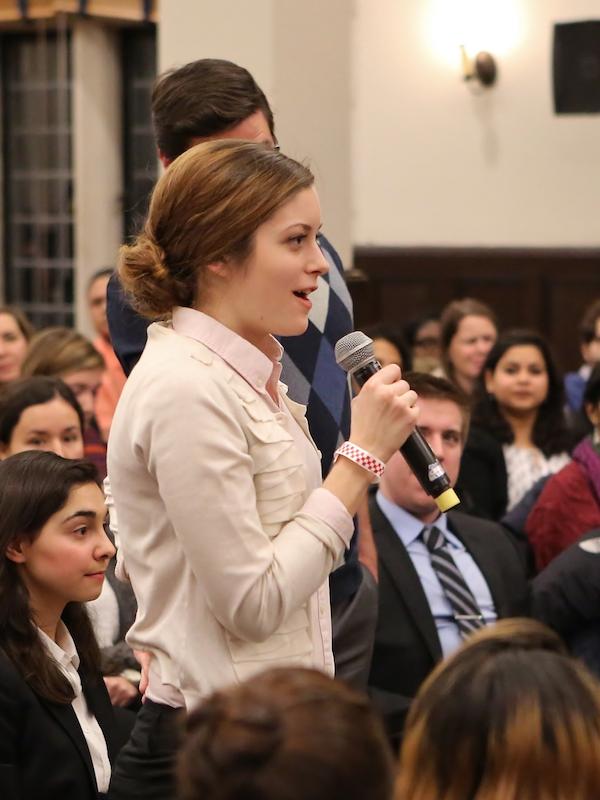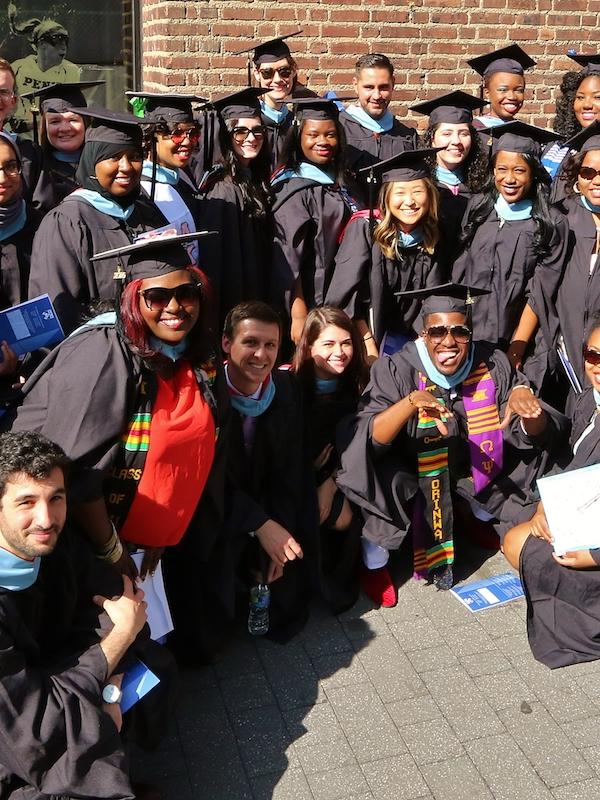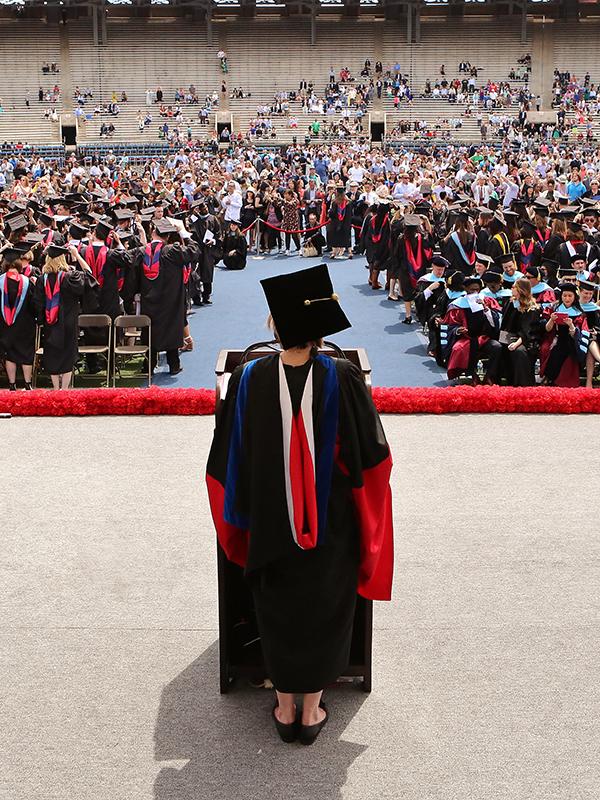Examining Education, Culture, and Context
by Lini S. Kadaba
Sydney Negus, GED’17, spends much of her workday conducting research and evaluating programs in a diverse school district where more than one hundred different languages are spoken at home by students. She did not have to travel far from Penn GSE to find this multicultural community and put her master’s degree in intercultural communication to good use—Negus works as a research assistant for The School District of Philadelphia.
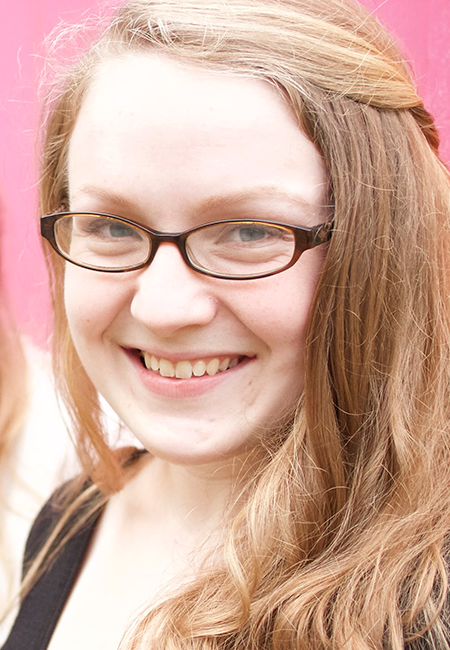
“The field of intercultural communications might seem internationally focused,” she says, “but in our increasingly diverse society, and especially our school system, these skills can be applied at home as well.”
In her role, Negus draws on her background in qualitative research methods to evaluate programs on site. This academic year, she is looking at Together Is Better, a program for English language learners being piloted in three schools. It pairs teachers of English for Speakers of Other Languages (ESOL) with general education teachers. The program keeps English learners in a general classroom, aiming to reduce the disruptions and isolation that can come from being taught separately while also helping native speakers.
“Being able to look at different cultures and how they interact is crucial. I think applying the lens in your own backyard is incredibly valuable.”
“Strategies that are good for ESOL literacy are good for literacy in general,” says Negus, a Bay Area native. For example, a teacher might review vocabulary before a lesson or jump-start students’ writing by providing partial sentences to be completed. “These are structures that can help a struggling reader even if English is their main language,” says Negus.
Negus’s intercultural perspective also aids her broader understanding of school settings. Last school year, she visited eight schools to evaluate the national Playworks TeamUp model, a program that trains school staff to improve recess experiences for students. Negus found that results varied from site to site, and what worked well often depended on the school’s climate and staffing levels. Context mattered— the fundamental lesson she learned in Penn GSE’s Intercultural Communication program.
“A lot of class discussions were about how you can have the best educational theory in the world and write a program that sounds great based on all the best evidence-based research,” Negus recalls. “But in the end, it has to happen in a real context with factors that affect things in ways you never could have anticipated.”
Negus’s interest in that tug between theoretical and practical is what attracted her to Penn GSE’s program and its commitment to field work. As a student she honed her eye for context by exploring how the concept of professionalism was taught to minority students working toward a high school diploma and vocational certification at a Philadelphia school. She wanted to understand how career preparation would be delivered to students—for instance, would instructors help students build on their existing communication skills when teaching them to communicate professionally, and how would that affect students’ trajectories?
“Being able to look at different cultures and how they interact is crucial,” Negus says. “I think applying the lens in your own backyard is incredibly valuable.”
This article originally appeared in the Spring 2019 issue of The Penn GSE Magazine.

